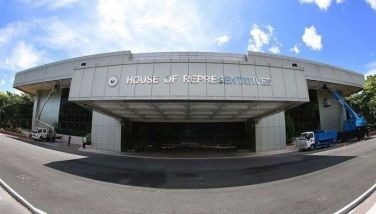Napalese piloted doomed plane
CEBU, Philippines - A veteran Civil Aviation Authority of the Philippines (CAAP) investigator revealed yesterday that the doomed Piper Seneca plane was piloted by Nepalese Kshitiz Chand, a student pilot of Captain Jessup Bahinting.
Cesar Lucero said the initial report indicated that Chand was sitting at the left side of the plane while Bahinting was occupying the right seat.
“The young pilot according to my initial investigation was the pilot-in-command when the accident occurred,” Lucero told the Rembrandt News Forum in Quezon City.
Lucero clarified the ongoing investigation is only focused on the cause of the accident, while he is doing a parallel investigation on the administrative lapses and possible violation of CAAP regulations.
Lucero said Chand might have been building up his flying hours to get a Piper Seneca rating.
“As per record, Chand has rating for Cessna planes, not for Piper Seneca,” he said.
Lucero also revealed his initial findings that the chartered flight taken by Robredo was also a training flight for the Nepalese student.
He said it is common practice among flying schools to allow the student pilot to take over while the pilot instructor seated at right observes, as was the case in several crashes involving light planes.
“It was a double income, the student pays for the training (flight) time (while) at the same the passenger pays for the chartered flight,” he said.
The minimum pay for every flying hour is P27,500 while the chartered flight, which is negotiable, depends on the distance of travel.
According to Lucero, he earlier warned Robredo on the danger of taking chartered flights, pointing out the uncertain status of the aircraft due to the “non-appearance” practice in issuance of airworthy certificates by erring CAAP officials.
He said the CAAP is like the Land Transportation Office (LTO) for motor vehicles that is supposed to undertake actual technical inspection of any aircraft.
A senior official of Task Force Kalihim, however, refused to comment on claims that Chand piloted the plane when it crashed.
“That’s technical. I don’t want to discuss that. Let’s leave that matter to our CAAP probers,” the official said.
Also being looked into was the reported absence of personnel at the airport’s control tower to guide the pilot.
“If you’re flying only on one engine of a twin-engine plane after one of the engines stopped running, it’s a big no-no to bank or make a turn to the side where the engine is no longer functioning. Also, ground guides from air traffic controllers are a must to safely land the aircraft,” a military aviator said.
There were speculations that personnel manning the Masbate airport’s control tower, all expecting clear air traffic that Saturday afternoon, had already gone home.
“During emergencies air and ground communication is very important for a safe landing,” he said.
But there were reports the Piper Seneca plane, while trying to land, suddenly banked and hit the sea instead of a thickly populated area had it maintained its flight path.
This is one of the theories also being looked into by CAAP investigators: that Bahinting made a sacrifice to avoid a major catastrophe by steering the plane away from the residential area.
CAAP is now studying the flight path of the doomed aircraft as the Philippine Coast Guard tries to recover the plane’s right engine still on the seabed of Masbate Bay.
The Piper Seneca plane that carried Interior and Local Government Secretary Jesse Robredo had failed to activate its emergency location transmitter (ELT) when it crashed off Masbate last Saturday, initial inspection by a team of air crash investigators revealed yesterday.
CAAP director general William Hotchkiss III, whose team is conducting the investigation, said that before the crash the plane’s ELT was functioning well when they conducted regular routine check.
An ELT is a device that automatically activates when a plane encounters emergency landing or any disaster. CAAP last checked the plane’s ELT on Nov. 21, 2011 and certified that it was valid for operation for a year.
“It is too early to speculate, our investigating team is still examining the plane wreckage to determine the cause of the accident,” Hotchkiss added.
The ELT was found with the plane wreckage last Wednesday but the plane’s right engine has yet to be recovered. The plane wreckage is now under tight security at the Masbate airport.
Hotchkiss added search and retrieval of the plane engine are ongoing.
“The engine is a key part of our investigation. This will determine if indeed it was technical or mechanical problem that caused it to fail,” Hotchkiss said.
Hotchkiss dismissed the possibility that diluted aviation fuel was used by the plane that caused the fatal crash.
He stressed premature conjectures like this will not help CAAP’s investigation into the crash.
Hotchkiss added that part of their investigation is to check the fuel used in the engine and trace where the plane last refueled before it took its final flight from Cebu to Naga City.
The three-man Aircraft Accident Investigation and Inquiry Board (AAIIB) is also reconstructing the flight path of the ill-fated plane, including communication between control towers and the pilot. CAAP has also taken the statements of key witnesses and will issue subpoena to others to shed light on the incident.
“It will not be an easy investigation but as directed by (Transportation) Secretary (Manuel) Roxas, we will not leave any stone unturned to find out the real cause of the accident,” Hotchkiss said.
He added the CAAP would look into the unsafe practices of aviation firms that continued to operate in spite of involvement in previous plane accidents.
Hours after the accident last Saturday, Roxas immediately directed the CAAP to dispatch a Go Team composed of aviation experts to conduct an investigation. He also ordered the suspension of Aviatour Air, the operator of the Piper Seneca plane, a day after the crash.
The retrieval operations were concluded after the body of Chand was retrieved Thursday.
Bahinting’s body was retrieved Wednesday by technical divers inside the plane’s cockpit when the wreckage was dragged to shallower waters. Bahinting owns and operates Aviatour Air.
On Tuesday, Robredo’s remains were found floating inside the wreckage some 54.86 meters (180 feet) deep and 800 meters from shore and retrieved by technical divers.
With the last of the missing retrieved from the crash site, authorities declared the CAAP would take over the investigation into the cause of the air crash.
CAAP formed a composite team last Wednesday to serve as AAIIB, headed by Captain Amado Soliman, an aviation industry expert in flight safety for over four decades, with Captain Ramon Flores and Captain Elmer Peña.— Philippine Star News Service - THE FREEMAN
- Latest
- Trending
























